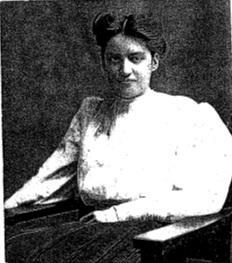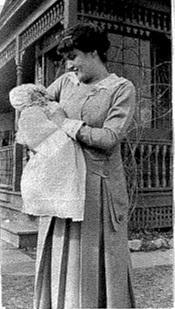
Shattering the Stigma of Institutionalization
Posted March 15, 2013 at 7:00 pm
By David Mack-Hardiman, Contributor
The fall of 1928 was an exciting time for John and Molly and their young family in Whitesboro, New York, a sleepy town outside of Utica. Molly was expecting their fifth child and their older children were eagerly looking forward to the change of seasons and holiday season.
Born in New York City, John was orphaned at an early age and was raised by members of his extended family in Central New York. He was a book keeper for a local business, volunteered at St. Paul’s Church, and was an accomplished pianist. Molly was born to a German immigrant family in 1889. She was the local telephone operator prior to her marriage and her voice was known to nearly everyone in the community.

In 1928, Franklin Roosevelt had been elected Governor of New York State. For many, family life revolved around the home, church, local picnics and field days. Molly’s parents owned a large tract of land which they divided as their own children married.
Molly and John’s home was built on the banks of a creek and had a large, enclosed porch. The huge living room had a beamed ceiling, fireplace, and enclosed book cases. In the dining room sat a baby grand piano which the couple would play to entertain guests. Molly’s extended family would frequently gather at the home for breakfast, after Sunday Mass.

In the fall of 1928, Molly suddenly lost her fifth child. While some in the family reported that she had a miscarriage, others indicated that her child was born with hydrocephaly or water on the brain. Shortly thereafter, their oldest child, Alma, contracted pneumonia. Molly provided exhaustive care to her daughter, day and night. At last, Alma recovered. However, Molly’s husband John came down with the ailment as well. After just five days of the illness, he died at the age of forty-one.
Exhausted and grief stricken, Molly seemed unable to absorb the shock of the loss of her child and husband in the space of several weeks. According to her obituary, she:
“....had contracted a cold, was forced to her bed and was unable to attend her husband’s funeral. A few days later, a more serious ailment developed and she was removed to the institution. There, for a time, her life hung in the balance. Thursday, a change for the better renewed hopes of near and dear ones. Friday came another change, and she sank rapidly to the end."
Obituary, “Soon United with Husband in Death,” (March 8, 1929), Utica Daily Press.
John and Molly Soper Hardiman were my grandparents. My father was just four years old when these tragic events occurred. He and his siblings were split up and sent to live with aunts and uncles. Their beautiful home was torn down, board by board, and every bit of it sold. I don’t know which psychiatric institution my grandmother died in—it may have been Utica or Marcy. The New York State Lunatic Asylum at Utica opened in 1843. Marcy is now the Central New York Psychiatric Center and provides services to persons incarcerated in the correctional system. What I do know is that John and Molly had an outspoken, artistic daughter who also died young at age twenty- three. Their three sons, each completely different from the next, were extraordinary influences in my life. Each of them was informally adopted into the lives of the families of three sets of aunts and uncles. And, each of them was devoted to family and the preservation of the memory of their parents.
Sources: Photographs of Richard J. Hardiman, letters and conversations with Frances Soper Nickerson, Robert F. Hardiman and John Vincent Hardiman.
- Category
- Museum of disABILITY History Blog
- Tags
- Asylums | Family History | Institutions | Personal Recollections | Shattering Stigmas

Comments
Add a comment
Nicole
Posted April 4, 2013 at 12:00 am
Tom
Posted March 26, 2013 at 12:00 am